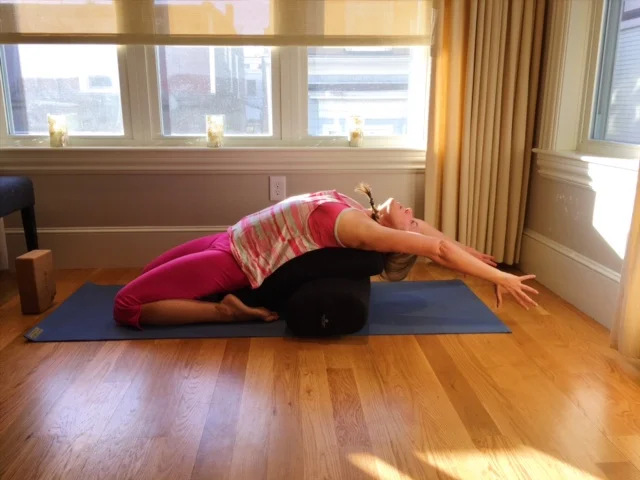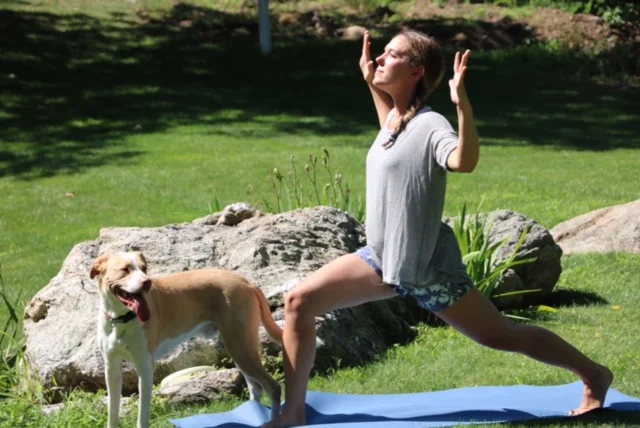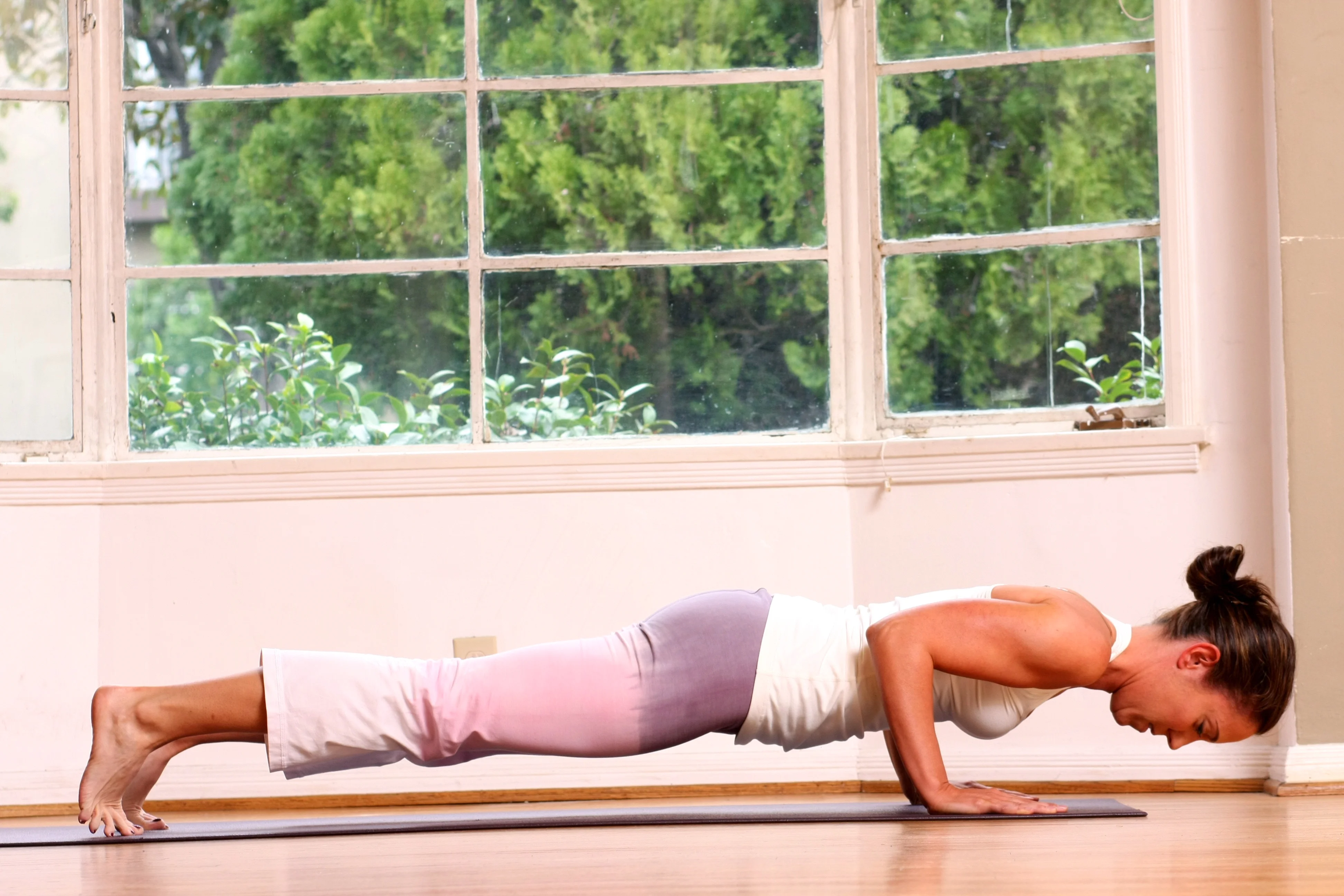3 Activities for Mind/Body Connection (for adults and kids)
Flash back to primitive times. You’re being chased by a lion. Blood is pumping fast, heart-beat accelerates, blood rushes to your arms and legs in preparation for the run of a lifetime. Somehow you make it safely to your cave. You’ve outrun the lion, nice job. Now fast forward to the 21st century and you find yourself at a desk drinking a mocha latte and sifting through your email inbox. Each message is a threatening predator to escape from. Add this to your monthly bills, sick children, difficult relationships,.... the list goes on. This prolonged stress is doing a number on our health since the brain and body are thoroughly connected so when the mind thinks it’s not safe, it gives signals to the body to fire up inflammation that unfortunately takes a while to subside (if ever).
I mention in many of my blog and social media posts the importance of mind/body connection and how important it is to tap into our parasympathetic nervous system where the body is told, “you’re safe, now it’s time to rest, digest, and reset.” In my work in the world of corporate wellness, I’m seeing a desperate need for a deeper level of stress management and more effective tools to teach our bodies at a deeper, more primitive level, that it’s safe and can now come out of reactive mode and into a more regulatory mode. The lion is gone.
Did you ever see a dog shake off? It means they’re regulating their bodies after or during a stressful or stimulating situation. After an animal escapes from being eaten in the Serengeti plains of Africa, we’re damn well certain there’s some sort of “shake off “happening. Then they happily go back to hunting for food, having sex, or whatever else they were doing prior.
People don’t do this. Our bodies do an excellent job of fighting for us, but never learn to calm down after the storm has passed. The thing is, we’re no longer fighting Saber tooth tigers and lions, yet are sadly still not able to turn off the stress response and it’s literally killing us. Our children also seem to be having a harder time in the world with anxiety, depression, and ADHD being the most common challenges. My 4 year old Tommy was tested for the Autism spectrum twice, and though not on the spectrum still suffers from Sensory Processing Disorder which makes it difficult for his brain to effectively organize the input from his environment so often overreacts or under-reacts to certain stimuli that most of us don’t even notice. (more on this in future posts)
This entire website is focused on nutrition, yoga, community, meditation, but today I’d like to share a few tactile tools to accelerate that quieting response in the body with 3 activities for mind/body connection for adults and kids in addition to yoga and meditation (which I discuss often). The great news is that my children have begun to benefit from these activities as well and it’s one of my favorite things on earth to witness!
1. Singing bowls- Connecting through the sense of sound.
Music of all kinds has shown to benefit mood, ease stress and bring calm focus to the brain. I always suggest listening to whatever kind of music that works best for you. I am a fan of all kinds, but today I want to talk about a kind that doesn’t get the air time it should.
From a scientific perspective, music changes neuronal (brain) activity with entrainment to musical rhythms in the lateral temporal lobe and in cortical areas devoted to movement. Nothing accomplishes this faster than a Tibetan singing bowl. In yoga, when we OM, we’re essentially chanting the “sound of the universe”. These singing bowls create vibrations with a similar frequency and when you listen ( whether in shavasana, or coming out of quiet time) it hits you right at the core. Seriously chill-worthy!
Singing bowls have been in use since the time of Buddha and are used today in yoga, reiki, music therapy, and sound healing sessions. The sound they produce is deeply meditative allowing the nervous system to peace out. I always think of the (luckily very few) times I’ve been put under anesthesia. The second before I’m out, my mind says…”all will be ok.” That’s what I feel like when these vibrational tones hit my ears.
Each bowl from our friends at Shanti bowl is made of “panchaloga”, which is a Sanskrit word meaning a five-metal alloy that includes copper, zinc, iron, and traces of gold and silver. It comes with a beautiful hand-carved wooden mallet and looks great on any mindfulness table or yoga alter.
To play the bowl, I simply tap the side of it with the mallot then run the mallot around the bowl in a circular motion to extend the vibrational tone and make the bowl “sing.” After tapping the bowl I close my eyes and take several deep breaths. To bring in more senses you may light a candle or place a drop of essential oil on your hands, rub them together and place your hands anywhere the body seems it needs some attention (all while listening to this magnificent sound) It’s mood altering...to say the least. If I want to include the kids, I wait for a good time (not a witching hour or when they’re hungry or cranky) and have them listen as well.
For more info (with a tutorial on how to play a singing bowl), check out the Shanti Bowl website! https://www.shantibowl.com/
2. Meditation Sand Tray: (Zen Garden) Connecting through sight and touch. For adults and kids 4 and up.
We call this our Peace & Tranquility table! Our beautiful sand station has been a great compliment to breathing exercises, yoga stretches, books, or music, especially when dealing with sensory issues.
This activity seems to make Tommy stop and focus, paying attention to the details in the box, move them around and notice how it feels. When teaching yoga, I say the word, “notice” quite a lot. I want my students to pay attention to what’s happening in the moment and in the case of asana, (yoga postures) what changes are occurring in the physical body. A tactile activity like a sand tray can provide similar effects without the use of a yoga mat.
It’s relaxing to rake the sand and roll the balls through it.
Our sand tray from Montessori_restore comes with pretty blue stones along with a little lavender sachet for a soothing scent. We also have an amazing Mortar & Pestle from this shop that’s just lovely. (posting in ista soon!)
Any type of sand station will do for this activity. You can even begin with a clean sandbox and layer on from there!
See video above for some of these mindfulness techniques in real time!
3. Books: Connecting through site, movement, and emotion
Activating emotion through a book can be a great way to set the stage for a purposeful morning or evening. Adult coloring books have been shown to calm the body and boost the mood similar to a glass of wine. For the kids, I love books like “I am Peace” by Susan Verde and “In my heart” by Jo Witek (and their entire line), and books like Gorilla Thumps and Bear Hugs by Alex Ortner which incorporates Emotional Freedom Technique (EFT/Tapping) for children. I plan to write an entire post on tapping but grab the book in the meantime;) In the yoga front, Good Morning Yoga and Good Night Yoga by Mariam Gates are wonderful for teaching the littles some basic postures. I also love books like “Absolutely no Dogs Allowed” by Asher Kranowitz that are great for sensory regulation.
Note to parents: If you think your child might suffer from sensory processing disorder and would like more information and tools, “The out of synch child by Carol Stock Kranowitz has been on my nightstand for the last 6 months, highlighted with all the pages folded. Excellent info!
For adults there are so many to name, but I love Untethered Soul, by Michael A. Singer, Go In and In by Danna Faulds (for beautiful poems and quotes), Light on Yoga by BKS Iyengar, and basically any book with a focus on the yoga sutras (there are hundreds).
Since we’re on the subject of the written word, I always suggest journaling to my clients as a great way to gather our thoughts, pause, and notice the reaction in the physical body once they’re out of our brains and onto paper.
Mind/body connection can be achieved a number of different ways and I’m hopeful that more and more of us are beginning to utilize these short-cuts and take them out of our tool box when we’re in need of a more regulatory, healing state.
PS. WANT MORE INSPIRATION? BE SURE TO SIGN UP FOR MY FREE NEWSLETTER. GET IT HERE!
Other Fun Posts on Mind Body Connection!
Disclaimer: This post includes affiliate links and products sold on this site including but not limited to nutritional supplements, ebooks, programs etc. which generate a tiny profit as the primary income of my blog at no additional cost to you. The greatest wealth is health so thanks for contributing!
https://www.sciencedirect.com/science/article/pii/S0014299908000277
https://s3.amazonaws.com/academia.edu.documents/43810357/Music_as_Therapy20160317-468-1joronf.pdf?response-content-disposition=inline%3B%20filename%3DMusic_as_Therapy.pdf&X-Amz-Algorithm=AWS4-HMAC-SHA256&X-Amz-Credential=AKIAIWOWYYGZ2Y53UL3A%2F20190626%2Fus-east-1%2Fs3%2Faws4_request&X-Amz-Date=20190626T202722Z&X-Amz-Expires=3600&X-Amz-SignedHeaders=host&X-Amz-Signature=642e5da80a24e78cf89369ee54acd608959f552e610e8e1af72b1af17797c438
https://www.nature.com/articles/nrn3666
https://www.gottman.com/blog/5-things-zebras-can-teach-us-about-fighting-stress/
https://www.thorprojects.com/blog/archive/2016/12/19/book-review-why-zebras-dont-get-ulcers-the-psychology-and-neurology-of-stress/
https://ajp.psychiatryonline.org/doi/abs/10.1176/ajp.147.3.313
https://www.cdc.gov/childrensmentalhealth/data.html

















I 4 step guide and worksheet devoted to the what, where, and why of meditation.